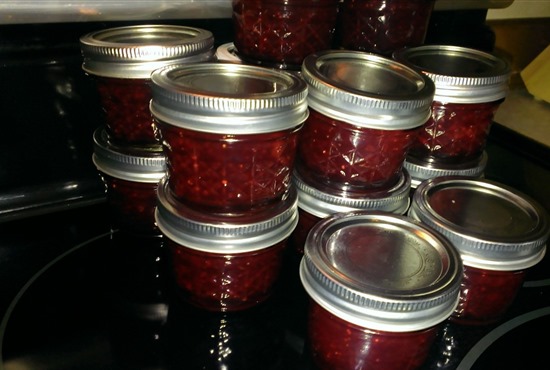How to make strawberries last longer
10.9 years ago perserve, puree, recipe, strawberries
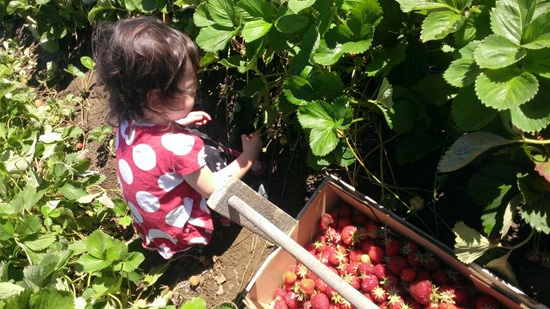
My youngest (2 years old) decided to venture out and too a little strawberry picking this weekend. It took her a little while (probably a solid pound of berries) to figure out we were supposed to be picking berries and putting them into our flat and not her mouth. Thirty minutes later and $11.50 paid I left with my full flat (11.5 pounds of berries)
The great about thing picking fresh strawberries is they are ripe and delicious, but the bad thing is you only have a few days before they start to go bad. Knowing that my little strawberry monster (and her older sister) would not even be able to get through over 11 pounds of berries in 3-4 days so had to start considering preservation methods.
Prevent the strawberries from molding
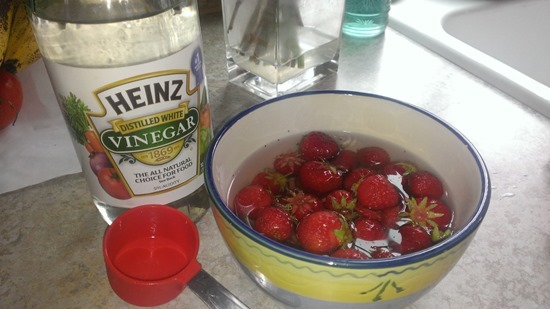
Here is an easy technique to extend the life of your berries by a few days to even a week. Prepare a solution of 1 part vinegar to 10 parts water (example for pint of berries I prepared above I did 1/8 cup of vinegar and 1.25 cups of water) Add your strawberries and given them a quick spin. Next you can optionally rinse them (solution is pretty weak so I do not taste any vinegar taste if I don’t rinse) and then place on an open air container.
This technique also works for other berries that may have molding problems and can enable your berries to last about a week or even up to 2 weeks depending on the actual ripeness when they were picked.
Sugar coat them
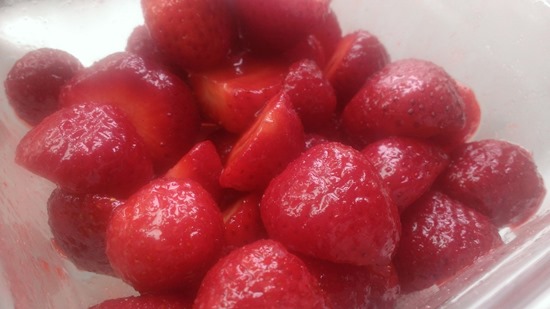
Though fresh organic strawberries are sweet enough all by themselves but adding about a teaspoon of sugar to a pint of cut strawberries will generate some strawberry syrups which can easily give you a week in the fridge. This can be a great topping to ice cream, pound cake, angel food cake, or even by themselves topped with a little whipping cream.
Strawberry Jam
This was the first obvious method of saving some of these delicious berries for next year. I picked up some new 1/2 cup jars since we typically do not make it through a full cup jar once the 3 week timer starts after cracking the seal. Also great size for sharing with the neighbors.
The recipe for any type of jam can be found in your box of pectin but I will repeat it here since I personalized some techniques to speed up the process.
Ingredients
- 5 cups of strawberries (4 cups crushed)
- 7 cups white sugar
- 1 package of pectin (I personally prefer the liquid form)
Directions
- Wash and cut tops off berries and crush them. I personally add them to my food processor and given them a little pulse to chop them up. Be sure not to over do this you want some chunks in there not a smooth puree.
- Add berries to large pot or saucepan and heat at medium high and add sugar.
- Let berries and sugar come to a rolling boil (when you still bubbles continue)
- Add pectin and wait until rolling boil returns and let boil for 1 minute while constantly stirring
- Remove from heat and fill cleaned a boiled jars/lids with 1/8 inch gap at the top being careful to remove any jam on the top of the jar.
- Once all jars are filled add to large pot filled with water on rolling boil (be sure to account for the displacement that will occur when you add your jars) The directions say you should have 2-3 inches of water over your jars. My tallest pot doesn’t allow this even for these 1/2 cup jars but have gotten good seals with 1/2-1 inch of water above in the past.
- Let boil for 10 minutes (more if higher altitude but see directions on pectin) and let sit at room temperature. Check the button on the top to see if you have a good seal. If one doesn’t stay down, no worries just through it in the refrigerator and that will be the first jar you consume. Let the remaining sit a room temperature for 24 hours, checking the seal again.
Your jam should be good for up to a year with a solid seal and up to three week refrigerated after opening.
Freezing Strawberries
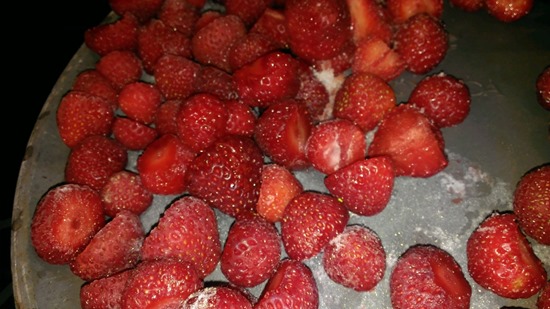
Freezing strawberries is a very easy option for preserving your produce. What I do is wash the berries and remove the tops and split any berries that are significantly larger than the others. Place on a cookie sheet and freeze for 8-12 hours and transfer to freezer bags and remove air with a straw (poor mans vacuum sealer) or use real vacuum sealer like I did below. With this technique the berries should not stick together and all ready to make some shortcake next winter.
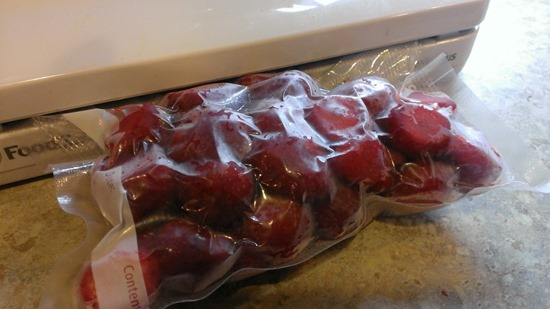
Growing vegetables from kitchen scraps
10.9 years ago guest post, indoor seed starting, vegetables
If you’re fond of gardening and you want to do something fun you can always use kitchen scraps to grow new vegetables. It’s not a difficult job, and you can ask your kids to help you. The activity can be extremely engaging, not to mention that you’ll have the chance to improve your kitchen’s overall décor.

Grow your own spring onions, fennel, leeks, and scallions
To plant the vegetables mentioned, you need the white roots. Your next step is to put the white roots in a pot and add some water, but pay attention because they shouldn’t be totally immersed in water. Put the pot on a window sill so that the sun can have access to it. In the next 3 to 5 days, you’ll see them grow. Take as much as you need and let the roots in the pot. Don’t forget to change the water once a week.
Lemongrass
The same applies to lemongrass, which means that all you have to do is put the roots in a pot, add water and place it near a sunny window. Note that lemongrass might need a little more sun than the vegetables mentioned above. After approximately seven days, you should see new growth. As soon as this happens, you have to move the plant into another pot, and add soil. Then, place it again near a sunny window.
Celery, Cabbage, Romaine Lettuce, and Bok Choy
You have to do the same as with the scallions. Remove the leaves, but not completely. Leave about one inch and face the white roots down; put them into a container and add water. Just like before, pay attention not to immerse the whole plant in water. These roots also need sun and constant fresh water. After a few days, you will notice that your plant will start sprouting, and in no more than 10 days, you will have to put it into soil. Obviously, the leaves must remain over the soil. In just a few weeks, you will have the possibility to harvest your produce. Lettuce, cabbage and celery will certainly compliment your kitchen’s décor, not to mention that they’re delicious.

Ginger
First of all, you have to know that growing Ginger is a really easy job. All you need is a chunk of Ginger that you will put in soil. Unlike the vegetables mentioned above, this one prefers filtered light. What is more, apart from using it in the kitchen, you can also utilize Ginger as a nice ornamental plant.
Potatoes
Everyone likes eating potatoes, especially children. So now you have the possibility to grow your own potatoes, whatever variety you prefer. The essential thing is for the scrap to feature those “eyes” growing on its surface. Every piece that you intend to use should have one or two eyes. Cut the vegetable into pieces, and let them in room temperature during the following days. Then, you have to plant them in a nutrient-rich soil. Hence, you need to add some compost into it prior to putting the potato cubs with their eyes up in the pot.
Garlic
To grow garlic you need just one clove. Put it in soil with the root facing down, and let the pot in a place that features warmth and sunlight. Then, the plant will grow and you will see how new shoots pop up. Once the plant is fixed into the soil, remove the shoots. After this, a new tasty garlic bulb will come out.

Mushrooms
If you want to grow mushrooms, make sure you do it in a pot and not in your garden, because otherwise, you will have a hard time trying to protect your mushrooms from other fungi. If you plant them in a pot, you will have the possibility to move them from one place to another in order to offer them the conditions they need. For example, you can try putting the mushrooms in a place that features warm filtered light throughout sunlight hours, and keep them in a place that features cool temperatures during nighttime. In order to grow mushrooms, you have to remove the head, and then put the stalk into a pot filled with soil. Note that the top of the stalk must remain at the surface.
Author Bio: Peter Smith wrote the awesome article. He is a part of site http://www.kitstone.co.uk/ where you can get a wide range of furniture collections. He is also a freelance writer who writes about everything fashion, health, home décor etc.
Hydroponic gardening kits in your living room via Home Lohas
10.9 years ago Uncategorized

Here are some awesome modular hydroponics setups by Home Lohas. Pretty much a supersized version of an Aerogarden, they use timers and proprietary selection of nutrient solutions to provide produce without soil and advertised in harvest times with 30% less time.
![home-lohas-2013-06-07[1] home-lohas-2013-06-07[1]](http://www.cheapvegetablegardener.com/wp-content/uploads/2013/06/homelohas201306071.jpg)
They use a full spectrum LED light system to provide adequate light without running up a huge water bill. Lights/pumps are completely automated so pretty much a turn key system.

Ok now the bad news the retail cost of one of these bad boys is $530US…so this will not be on my purchase list but is aesthetically pleasing enough I could see my hydroponics move from the garage to the living room if the price came down some.
Via Engadget
We have zucchini
10.9 years ago zucchini
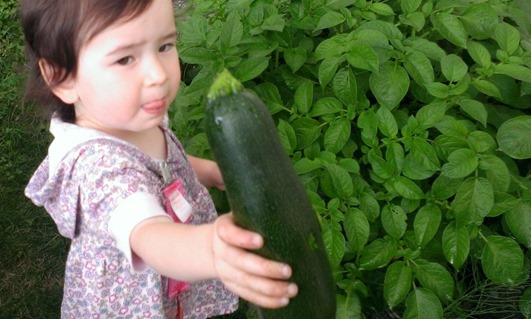
This is definitely very early for zucchini for this part of the country but I am not complaining. We just need a couple more to make zucchini bread (wife and kids favorite use) but for now I will be making zucchini noodles with this one
The great/bad thing about zucchini is once it gets rolling you can easily be overrun with produce and your neighbors start closing your blinds when you come up to the door with armfuls to attempt to get rid of 🙂
Building Your Own Pond
10.9 years ago fish poop, guest post, water
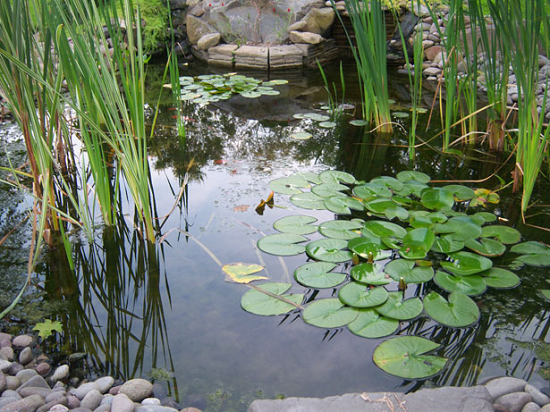
So you want to build a pond in your garden? There is a right way and a wrong way to go about it. First, you have to pick the area in your yard that will be a good fit. In order to do that, you have to know where all of the underground utility pipes are located. Whether it is water, electrical or cable, you don’t want to hit any of them when you start digging. You utility companies will be happy to come out and mark the locations to prevent any mishaps.
Next, you want to decide how large you want the pond and make sure it is not near a lot of trees. The leaves will clog it up and make a lot of extra work for you. An average pond is two to three feet deep. Unless you plan to put Koi in it, it will need to be three to four feet deep. Even if you decide against the Koi, it is always best to make sure you have running water to keep the mosquito population down. A simple pond pump will help ensure that the water is always moving.
You can easily find reading on how moving water makes a pond environment much healthier for plants and fish. To find ways to keep your water in motion see more info on pond pumps and water systems.
Now comes the time to go get your supplies. You can buy either a preformed or flexible liner for your pond. A flexible one allows you to determine the shape and size and are relatively easy to work with. You can build your pond with common garden tools; there is really no need to have heavy machinery, unless it is going to be a very large pond. You will also need sand to spread around before you put down your liner. This prevents tears from happening due to rocks and roots. Just spread it evenly and as thick as you can to be safe.
Make sure you get the rocks you need to line around the outside and to build a waterfall should you decide you want one. Most hardware stores will deliver them, so you shouldn’t need a truck. Don’t forget your water plants and decorative plants for around the pond either.
Not everyone has a yard or the space to build a pond. However, do not be discouraged, because you can still have a water garden by using a sealed decorative container. Just put rocks on the bottom and choose what water plants you would like to have. Once again, you will have to do something to prevent mosquitoes, even if it is only a small water garden. They will breed in any standing water. Either the water has to move, or you need goldfish to kill the larvae.
A pond can bring a lot of joy to you and your family. They are very calming and soothing to sit next to after a hard day at work. Especially those with the gentle sounds of water flowing over rocks. You’ll be surprised at how good it is for relaxation and even meditation.
Gnomes in the garden
10.9 years ago Uncategorized

Pretty awesome Ikea commercial involving gnomes, fortunately for me I just have one gnome and he is always sleeping.
